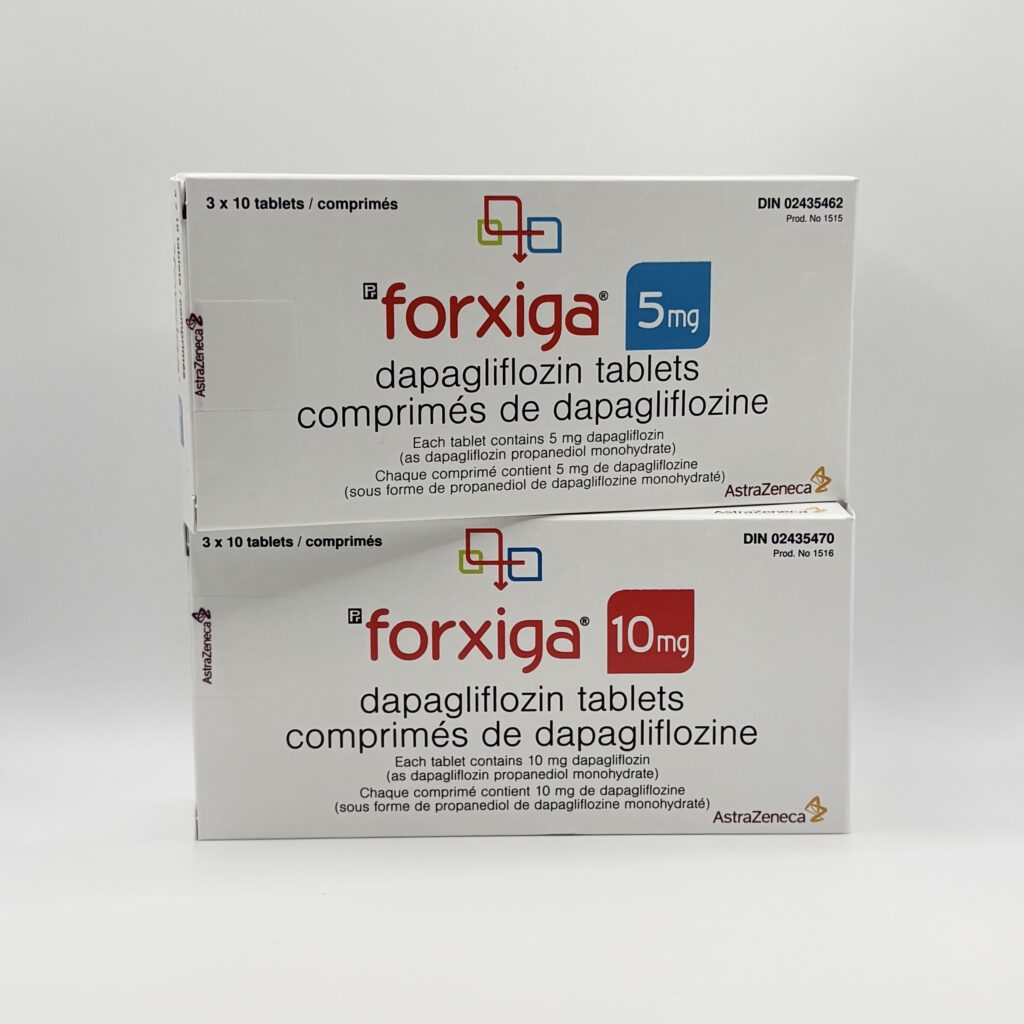Sick-day rules (important)
If you become vomiting/diarrhea dehydrated, can’t keep fluids down, or are preparing for surgery/long fasting, your clinician may advise temporarily holding Farxiga to reduce the rare risk of euglycemic DKA. Restart when you’re eating/drinking normally again, per your care plan.
Hydration matters
Aim for regular fluids, especially during hot months or if you’re physically active. This helps reduce dizziness and kidney stress as you start or increase the dose.
Yeast infection prevention
Keep the area clean and dry; consider breathable underwear and quick clothing changes after workouts. Report early symptoms so they can be treated promptly.
Cost and access notes
- Generic dapagliflozin is available from Canada, which can lower out-of-pocket costs compared to the brand.
- Formularies differ: some plans prefer brand vs authorized generic (or vice versa). Ask your pharmacist what’s lowest cost under your coverage.
- For cash-pay patients, compare pharmacy pricing and ask about discount cards or patient assistance.
FAQs
Is 10 mg always “better” than 5 mg?
Not always. 10 mg may offer more glycemic, heart, or kidney benefit, but only if you tolerate it and need the extra effect. If you’re at goal and feel well on 5 mg, your clinician may keep you there.
Can I take 10 mg every other day instead of daily?
No. Farxiga is designed for once-daily dosing. Don’t change frequency without medical advice.
Can I split a 10 mg tablet to make 5 mg?
Do not split tablets. Use the correct tablet strength prescribed.
Will 10 mg cause more side effects?
Some people notice more urinary frequency or yeast infections at higher doses. Good hydration and early treatment of symptoms help; your clinician will weigh benefits vs side effects.
Do I need labs before increasing to 10 mg?
Your clinician will review kidney function, blood pressure, and overall status before and after dose changes.
Bottom line
- 5 mg is a sensible starting dose for many people; 10 mg is often the target for stronger glucose, heart, or kidney protection if tolerated.
- Dose choice depends on your condition, goals, side effects, and other medications.
- Track your symptoms and numbers, stay hydrated, and follow sick-day rules.
- Work with your care team to decide whether staying at 5 mg or stepping up to 10 mg is the best fit for you right now.


